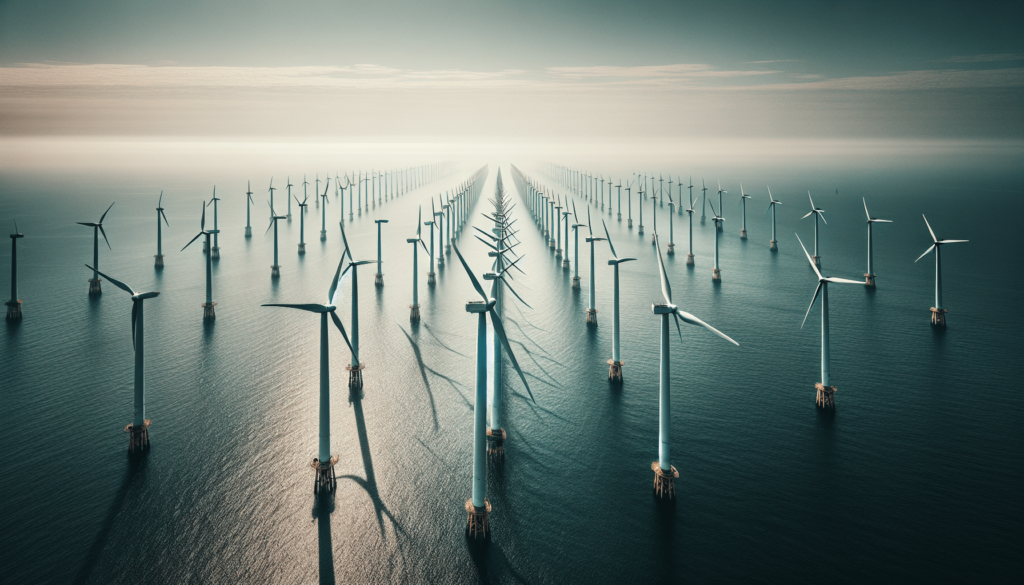How can communities benefit from large-scale offshore wind power projects?

Understanding the Basics of Offshore Wind Power Projects
Offshore wind power involves the use of wind turbines located in bodies of water to generate electricity. These projects have the potential to provide clean and renewable energy to communities while reducing their reliance on fossil fuels. Large-scale offshore wind power projects have gained momentum in recent years due to advancements in technology and a growing awareness of the need to transition towards sustainable energy sources.
Economic Benefits for Communities
One of the key ways that communities can benefit from large-scale offshore wind power projects is through the creation of jobs and economic growth. These projects require a range of skilled labor, from engineers and technicians to construction workers and maintenance staff. By investing in offshore wind power, communities can stimulate their local economies and create new opportunities for employment.
Environmental Impact and Community Health
Large-scale offshore wind power projects also have the potential to improve environmental quality and public health in surrounding communities. By generating electricity from wind, these projects reduce the need for burning fossil fuels, which are a major source of air pollution and greenhouse gas emissions. Improved air quality can lead to better health outcomes for residents, including lower rates of respiratory illnesses and cardiovascular diseases.
Community Engagement and Stakeholder Involvement
Community engagement is crucial for the success of large-scale offshore wind power projects. It is important for developers to involve local residents, businesses, and other stakeholders in the planning and decision-making process to ensure that the project meets the needs and concerns of the community. By fostering open communication and collaboration, developers can build trust and support for the project, which can lead to greater acceptance and success.

Infrastructure Development and Upgrades
Large-scale offshore wind power projects often require significant infrastructure development, such as the construction of transmission lines, substations, and onshore facilities. These projects can lead to improvements in local infrastructure and grid reliability, benefiting communities by enhancing energy security and resilience. Upgrades to existing infrastructure can also create opportunities for economic growth and job creation in the region.
Potential Challenges and Mitigation Strategies
While large-scale offshore wind power projects offer numerous benefits to communities, they also present challenges that need to be addressed. Some common concerns include visual impacts, noise pollution, effects on wildlife, and conflicts with other ocean uses. Developers can work to mitigate these challenges through careful planning, site selection, and technology advancements. Engaging with stakeholders and conducting thorough environmental assessments can help identify potential issues and develop solutions to minimize negative impacts.

Socioeconomic Considerations and Equity
It is important to consider the socioeconomic aspects of large-scale offshore wind power projects and ensure that benefits are equitably distributed among all members of the community. Low-income and marginalized populations may face barriers to accessing the benefits of these projects, such as job opportunities or lower energy costs. Developers can work with local organizations and government agencies to promote equity and inclusion, ensuring that the benefits of offshore wind power reach everyone in the community.
Case Studies in Community Impact
Several successful examples of large-scale offshore wind power projects demonstrate the positive impact they can have on communities. For instance, the Block Island Wind Farm off the coast of Rhode Island has created jobs, reduced energy costs, and supported local businesses. In Europe, countries like Denmark and the Netherlands have made significant investments in offshore wind power, leading to job creation, economic growth, and environmental benefits for their communities. These case studies highlight the potential of offshore wind power to transform communities and drive sustainable development.
In conclusion, large-scale offshore wind power projects have the potential to benefit communities in various ways, from creating jobs and stimulating economic growth to improving environmental quality and public health. By understanding the basics of offshore wind power, engaging with stakeholders, addressing potential challenges, and promoting equity, communities can harness the full potential of these projects to achieve a more sustainable and resilient future. It is essential for developers, policymakers, and residents to work together to maximize the benefits of offshore wind power while minimizing its negative impacts, ultimately creating a win-win situation for all involved.





